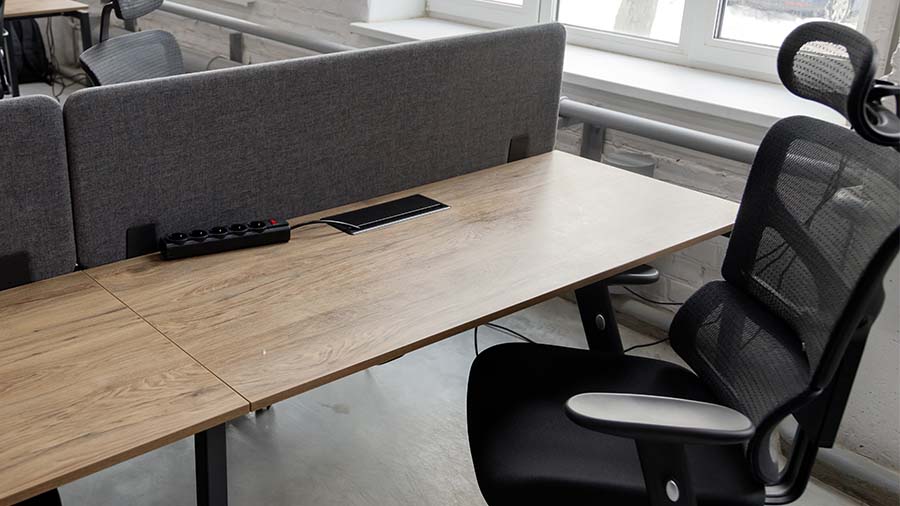Musculoskeletal disorders
and work with computer screens
With the evolution of technology, it is nowadays difficult to do without a computer and so we spend most of our day in front of computer screens, which is not without consequences for our body and our health, as we very quickly feel stiffness and pain in specific places: wrists, elbows, shoulders, spine or knees.
What can be done in a practical way in order to work in good conditions and avoid all these problems?

How should I design my workspace?
The workspace should be a place where you feel comfortable because you spend a good part of your day, or even your life, there.
|
Read also the article: Home Office, how to arrange your workspace at home? |
My working environment
A tidy room = efficiency. However, don’t hesitate to put some color around you for the pleasure of the eyes and to brighten up your days.
The room must be sufficiently ventilated and aired regularly.
Provide curtains in front of glass windows to reduce the effects of reverberation and reflections on our screens and desktops. Curtains also reduce the influx of sunlight into the office in summer.
How can I organize my workspace?
When we talk about workspace, we think of: a table, a seat, computer equipment and documents.
|
Read also the article: Improve your sitting posture while teleworking |
The Desktop or Work Surface
- Must be adjustable in height and adaptable to our needs;
- It must be not very reflective and of sufficient size.
The Office chair must:
- Be stable and comfortable;
- The seat is adjustable in height;
- The backrest is adjustable in height and inclination.
|
Read also the article: Dynamic sitting |
The screen must:
- Be placed facing us with a slight upward slope (15-20°) and be located perpendicular to the window;
- Be free of reflections and reverberation;
- The screen background must be clear with dark characters. Do not use more than 3 different colors on the screen.

How do I organize the layout and configuration of my work tools?
The chosen layout should allow us to vary our work postures according to our individual needs. Moreover, a good organization of the workspace allows us to improve our posture.
This is essential to avoid problems of visual fatigue and muscular strains, especially in the neck, shoulders and back.
So what posture should I adopt?
Having ergonomic equipment is not enough, you must also adopt good postures at all times:
- Make sure that your work chair settings are adapted to the height of your work surface and your height;
- Facing you, the first readable line of the screen should not be higher than the operator’s eye level;
- The viewing distance between the operator and the screen is 50 to 80 cm;
- Keep an area in front of the keyboard of 10 to 15 cm to rest the hands and forearms;
- Make sure the depth of the space behind your workstation is not less than 100 cm (in companies, to allow sufficient space in case of evacuation of the premises);
- There should be a 90° angle between arm and forearm and a minimum 90° angle between thigh and calf when sitting;
- The feet should be well supported on the ground. Otherwise, it would be necessary to use a footrest.
Some practical advice:
- Change posture regularly and use every opportunity to stand and move around;
|
Read also the article: The mini-breaks |
- Plan work to avoid prolonged or repetitive work in poor posture;
- Diversify tasks and plan break times;
- Incorporate regular stretching and muscle relaxation exercises into your daily routine.
|
Read also the article: Morning Routine |
- Avoid tense, non-physiological postures. Do not turn your head sideways towards the screen while using the keyboard placed straight in front of you, do not obstruct the free space of your legs (e.g.: wastepaper basket, bags, etc.);
- Maintain even illumination at your workstation;
- In a shared office situation, always check first that the settings of your work chair are adapted to the height of your work surface and your own height.

